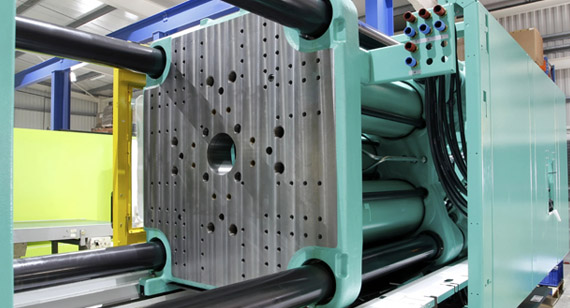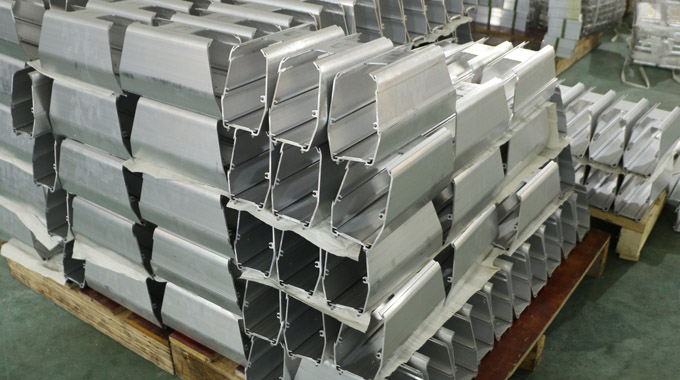15 years one-stop China custom CNC machining parts factory

Hey there I’m VMT Sam!
With 25 years of CNC machining experience we are committed to helping clients overcome 10000 complex part-processing challenges all to contribute to a better life through intelligent manufacturing. Contact us now
 164 |
Published by VMT at Jun 05 2024
164 |
Published by VMT at Jun 05 2024
Major Differences Between Injection Molding and Extrusion Molding
In the field of CNC machined parts manufacturing, injection molding and extrusion molding are two commonly used plastic forming techniques. Despite their shared goal of transforming plastic into desired parts, they differ significantly in several aspects.
Process
Injection molding is a closed-mold process where molten plastic is injected into a mold under high pressure, then cooled and solidified to form the product. Extrusion molding, on the other hand, is a continuous process where plastic is extruded through a die to form the desired shape.
Compatible Plastics
Injection molding is compatible with a variety of plastics, including thermoplastics and thermosetting plastics, whereas extrusion molding mainly suits thermoplastics. This is because extrusion molding requires the plastic to have sufficient flowability in the molten state to pass through the die.
Melt Strength
The strength and viscosity of the molten plastic are critical in injection molding. In contrast, extrusion molding demands lower melt strength, as the molten plastic primarily undergoes pressure and shear forces while passing through the die.
Tooling
Injection molding uses closed molds with complex internal structures to form the final shape of the product. Extrusion molding uses simpler dies, primarily an open channel through which the molten plastic is extruded.
Precision
Injection molding can produce high-precision, high-quality products because the molten plastic is subjected to uniform pressure and cooling in the mold. Extrusion molding products have lower precision due to variable pressure and shear forces during extrusion.
Product Manufacturing
Injection molding is suitable for producing complex shapes, high-precision, and large-volume products, such as electronic components and automotive parts. Extrusion molding is ideal for producing long, continuous shapes and profiles like pipes, cables, and window seals.
Cost
Injection molding involves higher initial equipment investment and mold costs but is economical for large-scale production to reduce unit costs. Extrusion molding has lower equipment and mold costs but may not suit all plastic types and products.
End-Use Applications
Injection molding products, due to their high precision and quality, are widely used in electronics, automotive, and medical devices. Extrusion molding products are mainly used in construction, transportation, and packaging industries.

Overview of Injection Molding
Injection molding offers many advantages, including excellent precision, compatibility with various plastics, consistent performance, increased productivity, and surface texture options. However, it also has drawbacks like high setup costs, longer initial lead times, and unsuitability for small batch production.
The injection molding process generally includes clamping, injection, packing, cooling, mold opening, and part removal. These steps are automated in CNC machining factories to ensure production efficiency and product quality.
Advantages
Excellent Precision: Capable of producing highly accurate parts.
Compatibility with Various Plastics: Suitable for various thermoplastics.
Consistent Performance: Ensures uniform part performance.
Increased Productivity: High degree of automation, high production efficiency.
Surface Texture Options: Can produce parts with different surface textures.
Economies of Scale: Low unit cost in mass production.
Disadvantages
High Setup Cost: Manufacturing precision molds is expensive.
Longer Initial Lead Time: Time required for mold making and debugging.
Unsuitable for Small Batch Production: Mold and equipment costs make small batch production uneconomical.
Injection Molding Process Steps
Material Preparation: Select appropriate plastic pellets.
Melting: Heat the plastic pellets in the injection machine to melt.
Injection: Inject the molten plastic into the mold.
Cooling: Allow the plastic to cool and solidify in the mold.
Ejection: Remove the solidified part from the mold.
Post-Processing: Includes processes like deburring and annealing.
Overview of Extrusion Molding
Extrusion molding offers advantages such as low cost, excellent surface finish, high-volume production, and versatility. However, it also has drawbacks like part size deviations, setup costs, and environmental costs.
Extrusion molding involves continuously extruding molten plastic through a die to form the desired shape, suitable for producing long, continuous shapes and profiles. In CNC machining services, extrusion molding is widely used in construction, transportation, and packaging industries.
Advantages
Low Cost: Equipment and mold costs are relatively low.
Excellent Surface Finish: Can produce parts with very smooth surfaces.
High-Volume Production: Suitable for continuous production, high efficiency.
Versatility: Can produce various shaped cross-section products.
Disadvantages
Part Size Deviations: Due to uneven cooling and extrusion process, size deviations may occur.
Setup Costs: While lower than injection molding, setup costs still exist for equipment and molds.
Environmental Costs: Mass production may generate waste.

Injection Molding vs. Extrusion Molding: Better Choice
Choosing between injection molding and extrusion molding depends on specific product requirements, including shape complexity, size precision, production volume, cost budget, and end-use. For complex shapes, high precision, and detailed parts, injection molding is usually the better choice. For long, continuous shapes and profiles, extrusion molding may be more suitable.
VMT: The Perfect Manufacturing Partner for All Plastic Products
VMT, a professional CNC machining factory, offers comprehensive injection molding and extrusion molding services. With extensive experience in both injection and extrusion molding, VMT provides high-quality, high-precision plastic parts manufacturing services. Whether for injection-molded or extrusion-molded CNC parts, VMT meets customer needs and offers excellent solutions to ensure product quality and delivery time.

Choosing VMT as your manufacturing partner, you will get:
Excellent Precision: Our injection molding process ensures each part meets the strictest tolerance requirements.
Fast Response: Our CNC machining service team quickly responds to customer needs, shortening delivery time.
Cost-Effectiveness: We offer competitive prices through economies of scale and lean production processes.
Quality Assurance: Our quality control system ensures each part meets the highest standards.
Customized Solutions: Our engineering team works closely with customers to develop products that meet specific needs.
At VMT, we are committed to being your perfect partner in plastic product manufacturing, driving your project's success together.
Conclusion
In summary, injection molding and extrusion molding differ significantly in several aspects. Choosing the appropriate forming technique requires considering factors like product type, production volume, cost budget, and delivery time. VMT, as a professional CNC machining factory and service provider, is dedicated to offering high-quality plastic parts manufacturing services to customers.
Ready To Start Your Next Project?
Get Instant Quote

Request a Free Quote
Send us a message if you have any questions or request a quote. We will get back to you ASAP!